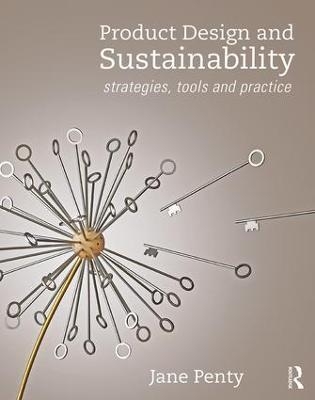
Product Design and Sustainability
Routledge (Verlag)
978-1-138-30198-6 (ISBN)
As a guide and reference text, Product Design and Sustainability provides design students, practitioners and educators with the breadth and depth needed to integrate the most appropriate sustainable strategies into their practice. It establishes the principles that underpin sustainability and introduces a diverse range of social, economic and environmental design responses and tools available to designers. The numerous real-world examples illustrate how these strategies play out in different product sectors and reinforce the view that sustainability is the most positive opportunity and creative challenge facing designers today.
This book:
delivers a comprehensive guide to the principles of sustainability and how they apply to product design that can readily be integrated into curricula and design practice
reveals many of the issues specific product sectors are facing, and provides the depth and breadth needed for formulating and developing sustainable design strategies to address these issues
empowers and inspires designers to engage with sustainability through its many examples and insightful interviews with practitioners
is fully illustrated with over 300 photographs, graphs and diagrams and supported by chapter summaries, annotated further reading suggestions, and a glossary.
Jane Penty is a designer and educator focused on the creative challenge of transforming how and what we consume into tools for sustainable living. She is Sustainable Design Leader for BA Product Design at Central Saint Martins, UAL, London, UK.
Preface. Acknowledgements. Introduction. Part 1: Concepts and context. 1. Sustainability and design in context. 1.1 Our unsustainability and major threats. 1.2 The concept of sustainability: definitions and models. 1.3 A timeline: design and the sustainability movement. 1.4 Obstacles, challenges and key players for change. Chapter summary. Key texts and further reading. Endnotes. Part 2: Strategies, tools and approaches. 2. Environmentally led strategies. 2.1 From less bad to better and positive: an overview of approaches. 2.2 Thinking in systems and designing for life cycles. 2.3 Tools and metrics for better design choices. 2.4 Carrot and stick: voluntary, mandatory, regulations and certification. 2.5 Radical rethinks: low tech and old tech. Chapter summary. Key references and further reading. Endnotes. 3. Socially led strategies. 3.1 Overconsumption: shifting the consumer society through behaviour change. 3.2 Better products and real needs: human centred and socially responsible design. 3.3 The other 70%: design for the base of the pyramid. 3.4 Ethics & sustainability: design as a tool for change. Chapter summary and key design challenges. Key references and further reading. Endnotes. 4. Economically led strategies. 4.1 Introduction to economy and sustainability. 4.2 The rise of more responsible business. 4.3 Emerging business models: the collaborative economy. 4.4 Emerging business models: open design and distributed production. 4.5 Emerging business models: the circular economy. Chapter summary. Key references and further reading. Endnotes. Part 3: In practice. 5. Short-use products: packaging, consumables and disposables. 5.1 In the balance: pros and cons of Consumer Packaged Goods. 5.2 Key re-design strategies. Chapter summary. Endnotes. 6. Electronic tools and digital gateways. 6.1 the visible and invisible environmental impacts of the digital world. 6.2 design strategies for reducing the environmental impacts of electronic devices. 6.3 the social value of digital tools. Chapter summary. Endnotes. 7. Furniture and space related products. 7.1 Furniture trends and their sustainability implications. 7.2 Problematic materials and toxicity. 7.3 Design strategies for more sustainable furniture. Chapter summary. Endnotes. 8. Transportation and mobility: products and services. 8.1 The environmental, social and economic impacts of transportations and mobility. 8.2 Design for more sustainable transport modes. 8.3 Systems thinking: new technologies and business models for mass personalised mobility. Chapter summary. Endnotes. Conclusion. Glossary. Index.
| Erscheinungsdatum | 02.09.2019 |
|---|---|
| Zusatzinfo | 4 Tables, color; 61 Line drawings, color; 1 Line drawings, black and white; 264 Halftones, color; 4 Halftones, black and white; 325 Illustrations, color; 5 Illustrations, black and white |
| Verlagsort | London |
| Sprache | englisch |
| Maße | 219 x 276 mm |
| Gewicht | 1260 g |
| Themenwelt | Kunst / Musik / Theater ► Design / Innenarchitektur / Mode |
| Naturwissenschaften ► Biologie ► Ökologie / Naturschutz | |
| Technik ► Architektur | |
| ISBN-10 | 1-138-30198-1 / 1138301981 |
| ISBN-13 | 978-1-138-30198-6 / 9781138301986 |
| Zustand | Neuware |
| Haben Sie eine Frage zum Produkt? |
aus dem Bereich


